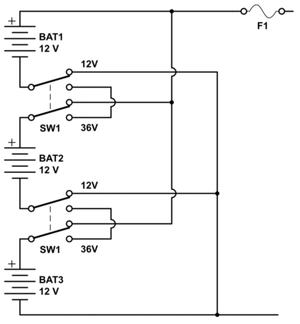No network is so perfect that it couldn’t be improved by the addition of a few hundred gigs of storage. But until recently, only system administrators have been able to lay their hands on easy-to-configure network storage appliances. Buffalo’s LinkStation puts excessive amounts of storage in the hands of ordinary folks.
At its heart, the LinkStation is a 120GB hard drive with an Ethernet interface. Plug it into a power source, connect the included cable to your network, and run the setup wizard on your Windows machine. The LinkStation then shows up on your network as a drive; anyone on the network can connect to it, add and remove files, and in general treat it just like any network file server. No client-side software is needed, although the LinkStation’s utilities make it considerably easier to map the network drive to drive letters on a PC.
In our tests, the LinkStation proved fast enough to stream MP3 audio files over a Wi-Fi network to three separate clients simultaneously with no noticeable problems. When connected directly to a notebook, the LinkStation transferred files at an average speed of 6.1MB per second — not as fast as a USB hard drive, but respectable for a network device.
The LinkStation’s semiautomated setup wizard walks you through the configuration process, including plugging in the device, and includes helpful photographs for each step. In contrast with most network devices we’ve tested, this wizard actually worked better than the device’s standalone utilities, which have an unfinished appearance (including misspellings in dialog boxes) and which frequently failed to configure the device properly. The wizard, on the other hand, worked every time.
Once it’s up and running, you get to the LinkStation’s management console by entering the IP address of the device into your browser. Through this interface, you can see how much storage is being used, configure the IP address and network settings of the device, and other basic tasks such as data integrity checking and formatting. This console also lets you create users, passwords, and groups, then restrict access to the LinkStation (or to certain folders on it) to the users or groups you specify.
The LinkStation includes two USB 2.0 ports, one on the front of the device and one on the back. If you plug a USB hard drive or flash memory device into either of these ports, it also shows up on the network as a second shared hard drive. Through the management console, you can back up the contents of the LinkStation to this attached drive, either immediately or on a set schedule. (You can also configure the LinkStation to make attached USB hard drives unavailable as shared storage, in case you want to use them exclusively for backup.) In our tests, this feature worked well, although occasionally the USB drive’s folder information — including directory listings — remained available on the network even after the drive had been unplugged.
The LinkStation can also act as a network print server. When you connect a printer to either of the LinkStation’s USB ports it becomes available to any computer on the network. However, you can’t connect two external drives or two printers — the LinkStation supports only one of each.
Conspicuously absent from the LinkStation are utilities that help users take better advantage of its storage — such as remote audio-video access or automated backups from your notebook or desktop. We’d also love to see a version of the LinkStation that included its own wireless network card so that you could connect it directly to Wi-Fi networks without any cabling; or a version that integrates a Wi-Fi router so that you could use a single device to provide storage and wireless access. That said, the LinkStation is a useful addition to any small network, wired or wireless. -Dylan Tweney
Best Feature: Easy expansion and backup via USB port
Worst Feature: Unfinished-looking utilities
SPECS:
Buffalo LinkStation HD-H120LAN
$349
Weight: 3.1 pounds
Size: 7.3 x 6.8 x 2.7 inches (with stand)
Specs: 120GB of storage; Ethernet; USB 2.0; integrated print server
www.buffalotech.com
* * * 1/2
Link: Buffalo LinkStation HD-H120LAN
Link broken? Try the Wayback Machine.

